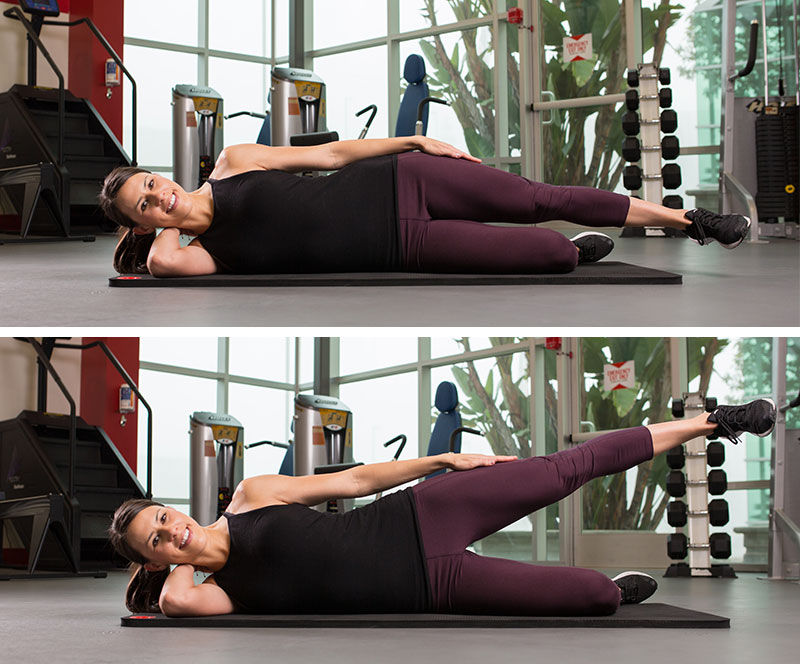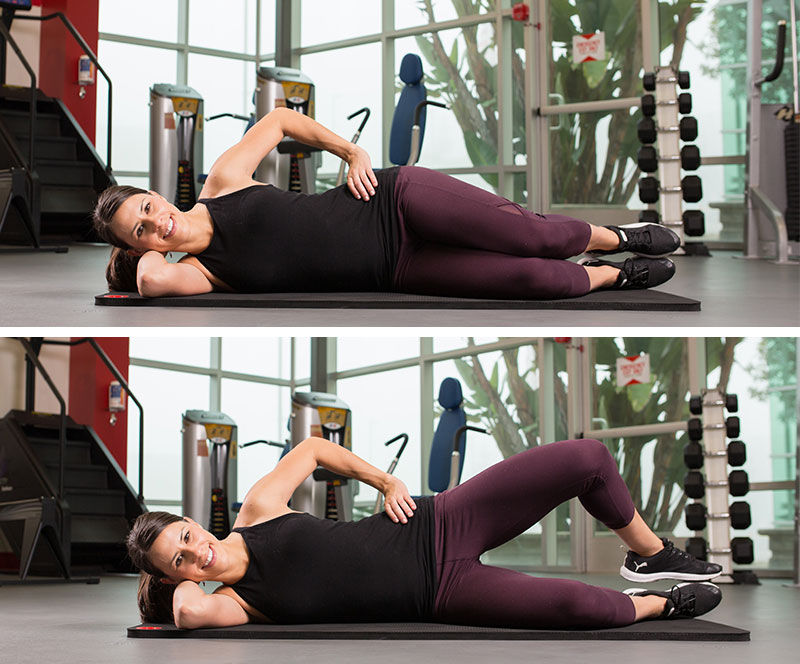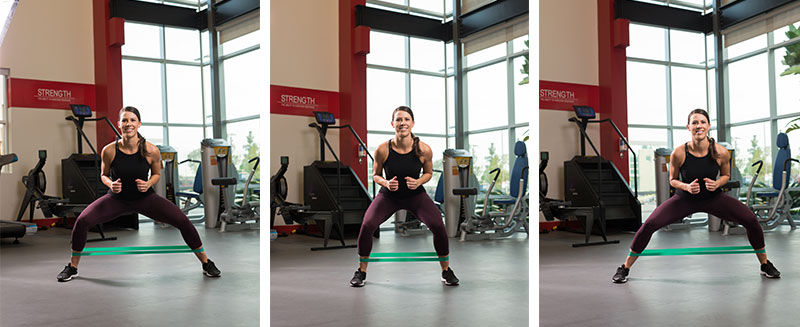The gluteus maximus gets a lot of attention, not only because it’s a prime mover for exercises like squatting, hip hinging and running, but because of its derriere-shaping effects. There is, however, another often-overlooked gluteal muscle deserving of your attention.
The gluteus medius is responsible for abduction, internal and external rotation of the hip, and stabilization of the hip and pelvis during weight-bearing activities (Macadam, Cronin and Contreras, 2015). To locate the gluteus medius, stand with your hands over the sides of your hips, below your iliac crest. Stabilize on one leg and abduct the other. You should feel the muscle directly under the hand of your abducting leg contract. This is your gluteus medius. (Note: The gluteus medius of your standing leg is also working to stabilize your hip and pelvis).
For many of your clients, this important hip muscle is underactive and weak, which can alter hip, knee and lower-back function, and is associated with low-back pain (Cooper et al., 2016; (Philippon et al., 2011). Help your clients activate and strengthen this powerful lower-body muscle by including the following six exercises in their exercise programs. You can use these six glute med exercises individually or as a warm-up for lower-body compound or locomotive movements.

Side-lying Hip Abduction
Lie on one side with the bottom leg bent to 45 degrees and the top leg straight. Stack the hips and shoulders directly on top of one another. There is a strong tendency to roll the hips forward or back here. Setting up with a wall directly behind the client can be a helpful positioning cue. Engage the gluteus medius to lift the upper leg toward the ceiling; squeeze and hold the top position and then slowly lower the leg. This is not a big movement and is easily overdone, which shifts the work away from the gluteus medius to other surrounding musculature. Avoid any crunching with the trunk and lift the leg just high enough to feel the gluteus medius engage. For an additional challenge, add an isometric hold at the top.

Clamshell
The setup here is similar to the first exercise, but the upper and lower legs are both bent (imagine being in a sit-up position and rolling over to one side). Activate the gluteus medius to lift the top leg open, as if opening a clamshell. Add a Versa Loop band for a greater challenge.

Isometric Single-leg Wall Lean
Standing parallel to a wall, flex the hip closest to the wall to 90 degrees, with the knee bent. Press the foot of the stance leg into the floor while driving the bent leg into the wall. The gluteus medius of the standing leg will fire to stabilize the pelvis.

Monster Walks
Place a Versa Loop band around the ankles, shins, or immediately above or below the knees and assume a quarter-squat position. Maintain the squat and step diagonally forward as if walking, and then walk backward toward the starting position. Place the band lower on the legs or use a heavier band to increase the challenge.

Lateral Band Walks
Place a Versa Loop band around the ankles, shins or directly above or below the knees and assume a quarter-squat position. Maintain the squat position while stepping laterally, keeping tension on the band throughout.

Banded Triplanar Toe Taps
Place a Versa Loop band directly above the knees and shift into a single-leg, quarter-squat position. While balancing on the standing leg, tap the alternate leg forward, to the side and directly behind. The core and hip muscles will fire to maintain single-leg balance against the band’s resistance in three different directions. This exercise works the gluteus medius of both the moving leg and the stabilizing leg, as they fire to maintain single-leg balance against the band’s resistance in three different directions.
References
Cooper, N.A. et al. (2016). Prevalence of gluteus medius weakness in people with chronic low back pain compared to healthy controls. European Spine Journal, 25, 4, 1258–1265.
Macadam, P., Cronin, J., and Contreras, B. (2015). An examination of the gluteal muscle activity associated with dynamic hip abduction and hip external rotation exercise: A systematic review. International Journal of Sports Physical Therapy, 10, 5, 573–591.
Philippon, J. et al. (2011). Rehabilitation exercise progression for the gluteus medius muscle with consideration for iliopsoas tendinitis: An in vivo electromyography study. The American Journal of Sports Medicine, 39, 8, 1777–1786.




 by
by 









 by
by